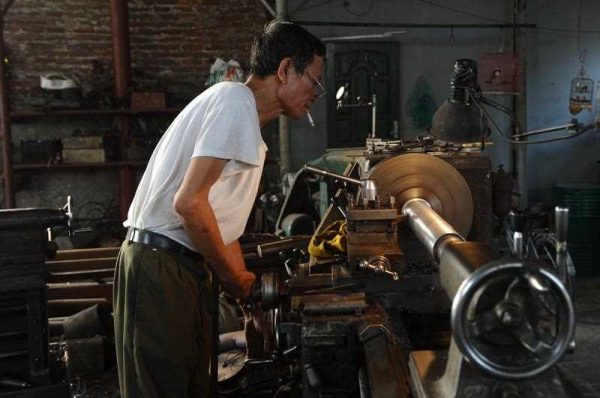Increasing the rate of growth to somewhere in the vicinity of 8 per cent a year is imperative if Vietnam is to avoid the so-called middle income trap.
Another feature of the Vietnamese economy is that growth has increasingly been driven by foreign direct investment (FDI). FDI firms in recent years accounted for nearly half of industrial output and more than 65 per cent of exports. The contribution of FDI has been even stronger in various types of machinery, such as telephones, computers, motorbikes and home electric appliances. In addition, due to high income-elastic characteristics, machinery is now the mainstream of industrialisation and trade in the growing East Asian region.
Because of the large flows of FDI, Vietnam has been increasingly intertwined in the machinery supply chains developed by multinational corporations in East Asia. Machinery is becoming increasingly important in Vietnam’s trade structure: it accounted for more than 30 per cent of Vietnam’s exports in 2013, compared to only 10 per cent in 2000. Given the expansion of FDI in this field in recent years, this share can be expected to rise further.
But Vietnam’s current lukewarm rate of growth, driven largely by FDI, may result in structural problems in the long run, where FDI-intense sectors grow quickly and other sectors do not. One reason for this worry is that most FDI firms in Vietnam are wholly foreign-owned. The number of joint ventures between foreign and local firms is quite small. At the end of 2013, approximately 80 per cent of FDI projects were wholly foreign-owned. Vertical linkages between FDI and local firms are also very weak. FDI firms in machinery assembly heavily rely on imports of parts, components and other intermediate goods. They do partially procure intermediate goods in domestic resources but mainly from the supply of other foreign firms rather than local firms. This problem stems from the presence of state-owned enterprises (SOEs).
SOEs do not engage in the production of either manufactured goods for export or intermediate goods for machinery assembly industries. SOEs themselves are not only inefficient but also affect the direction of economic policies and distort the allocation of resources. Therefore local firms in the private sector are also not efficient suppliers of intermediate industry goods since they are placed at a disadvantage in terms of access to capital and land for investment.
So long as SOEs are not comprehensively reformed, the dual structure of the Vietnamese economy will continue.
Since the range of what is considered ‘middle income’ is wide, from US$1000 to about US$10,000 per capita, the problems of the lower middle income countries — those with per capita incomes up to about US$4000 — must be different from the higher middle. High middle income countries, such as Malaysia or Thailand, are reaching the so-called Lewisian turning point, where excess labour in subsistence agriculture can no longer be soaked up by industrial sectors without increasing wages.
In order to avoid the middle income trap, these countries should strengthen their research and development capability, emphasise the quality and appropriateness of human resources, and improve the institutional system for nourishing a dynamic private sector which pushes the structure of comparative advantage toward higher-skill, more innovation-intensive production.
For lower middle income countries like Vietnam, still characterised by a surplus of labour, the efficient allocation of the factors of production is important. Reforms to overcome distortions in factor markets, in order to increase the capital and land productivity, are essential.
Strong FDI performance can help Vietnam maintain a course of moderate growth in the future, but unless substantial institutional reforms are carried out, the economy will continue to underperform in sectors that are not exposed to foreign investment. In the future, when wages begin to rise, foreign investors will stay only if labour productivity increases. And if it doesn’t, the Vietnam could find itself trapped in the ranks of the lower middle-income countries.
Tran Van Tho is Professor of Economics in the School of Social Sciences, Waseda University.


Thank you for a thoughtful comment. The role of SOE is well stated. In another posting, you could explore why China has been able to succeed where you fear Viet Nam may become stuck?
Andrew